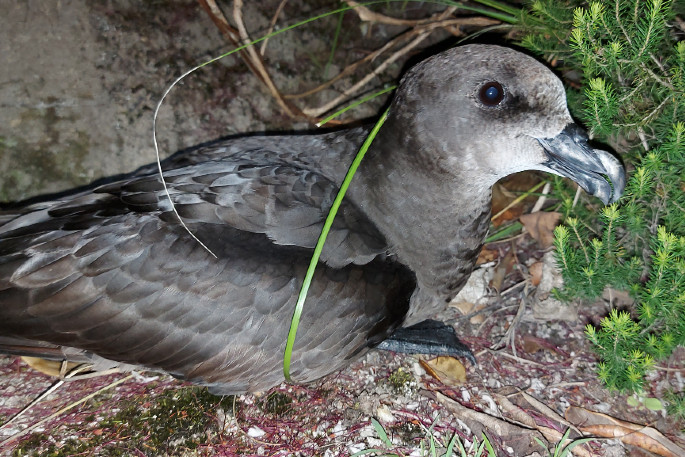For the first time in more than 30 years, the grey-faced petrel colony on the northern flank of Mauao has produced more than 60 chicks, says Western Bay Wildlife's petrel specialist Paul Cuming.
Paul says it was a 'perfect storm, in a good way, for the petrels”, with a combination of elements coming into play.
'First of all there was a massive upwelling of squid,” says Paul. 'When we checked the birds in October they were chock-full. I've never felt them that full of squid before.”
He knows this because he observed a few chicks regurgitate squid.
'That's Science 101 right there. There was also quite a variety and a lot of pest control employed this season, not just the usual traps and baits.
'Some of the chicks would have been fed by both mum and dad and some by only one parent. That makes a difference on how fast the chick grows.”
As well as a constant flourishing food supply, and the weather not being too unkind, there was additionally a very human reason why so many chicks hatched. Paul says the lack of cruiseships coming into Tauranga increased the chicks' chances of survival as they weren't distracted by cruiseship lights on their first flights.
'No cruiseships is a good thing for petrels,” says Paul. 'The cruiseships look like Christmas trees lit up. One year we had 17 chicks handed in from the port, all alive.”
The impact of lights on the fledgling chicks has been well-researched and reported on, more recently by Kerry-Jayne Wilson in her book ‘New Zealand Seabirds: A Natural History' where she wrote about seabirds crashing into cabin lights on boats in Milford Sound.
'The lights are the problem, especially bright ones,” says Paul. 'Seabirds navigate by the night sky so they think that all Mount Maunganui lights are the stars. We get quite a lot of chicks at fledgling time just on the street, or even down in Pāpāmoa.
'In Hawaii they changed from Friday night football to Saturday morning football because there were so many birds flying at night into the football stadium floodlights. And in Kaikoura the street lights are pointing less to the sky and more to the ground to limit the number of fledging Hutton's shearwaters flying into them.”
Paul, who has been banding Mauao petrel chicks since 1989, has been up the Mount 11 times with his team this season, between 9pm and midnight.
'We managed to get a marking on 59 of them, but there were more chicks than that.”
During September and October the eggs hatch. Field work starts in October with the study burrows checked first and the main work occurs December-January.
'If you wanted to choose a project with a peak of work between Christmas and New Year you couldn't find a better one, although finding people to come out between 9pm and midnight around Christmas is like trying to find a chook's molar.”
He's delighted with this year's cohort of chicks. 'It's a good news story, needs to be told.”

